On Spacetime Duality and Bounce Cosmology of a Dual Universe †
Abstract
:1. Introduction
2. Extended Field Equations for a Conformally Curved Universe
3. Bounce from a Closed Early Universe
4. Evolution of Universe Worldlines
5. Spiral Galaxy Formation and Rotation under External Fields
6. Early Universe Boundary Contribution
7. Conclusions and Future Works
Supplementary Materials
Institutional Review Board Statement
Informed Consent Statement
Data Availability Statement
Acknowledgments
Conflicts of Interest
References
- Tolman, R.C. On the theoretical requirements for a periodic behaviour of the universe. Phys. Rev. 1931, 38, 1758–1771. [Google Scholar] [CrossRef]
- Minas, G.; Saridakis, E.N.; Stavrinos, P.C.; Triantafyllopoulos, A. Bounce cosmology in generalized modified gravities. Universe 2019, 5, 74. [Google Scholar] [CrossRef] [Green Version]
- Singh, T.; Chaubey, R.; Singh, A. Bounce conditions for FRW models in modified gravity theories. Eur. Phys. J. Plus 2015, 130, 1–9. [Google Scholar] [CrossRef]
- Cai, Y.F.; Easson, D.A.; Brandenberger, R. Towards a nonsingular bouncing cosmology. J. Cosmol. Astropart. Phys. 2012, 2012, 020. [Google Scholar] [CrossRef]
- Klein, O. Instead of cosmology. Nature 1966, 211, 1337–1341. [Google Scholar] [CrossRef]
- Klein, O. Arguments concerning relativity and cosmology. Science 1971, 171, 339–345. [Google Scholar] [CrossRef] [PubMed]
- Di Valentino, E.; Melchiorri, A.; Silk, J. Planck evidence for a closed Universe and a possible crisis for cosmology. Nat. Astron. 2020, 4, 196–203. [Google Scholar] [CrossRef] [Green Version]
- Handley, W. Curvature tension: Evidence for a closed universe. Phys. Rev. D 2021, 103, L041301. [Google Scholar] [CrossRef]
- Landau, L.D. Theory of Elasticity; Elsevier: Amsterdam, The Netherlands, 1986. [Google Scholar]
- Straumann, N. General Relativity (Graduate Texts in Physics); Springer: Berlin/Heidelberg, Germany, 2013. [Google Scholar]
- Rugh, S.E.; Zinkernagel, H. The Quantum Vacuum and the Cosmological Constant Problem. Stud. Hist. Philos. Sci. Part B Stud. Hist. Philos. Mod. Phys. 2000, 33, 663–705. [Google Scholar] [CrossRef] [Green Version]
- Minami, Y.; Komatsu, E. New Extraction of the Cosmic Birefringence from the Planck 2018 Polarization Data. Phys. Rev. Lett. 2020, 125, 221301. [Google Scholar] [CrossRef] [PubMed]
- Al-Fadhli, M.B. Extended General Relativity for a Conformally Curved Universe. 2021. Preprints. Available online: https://www.preprints.org/manuscript/202010.0320/v5 (accessed on 22 June 2021).
- Kozameh, C.; Newman, E.; Gravitation, K.T.-G. Relativity and gravitation, and undefined 1985. In Conformal Einstein Spaces; Springer: Berlin/Heidelberg, Germany, 1985. [Google Scholar]
- Gannouji, R.; Kazantzidis, L.; Perivolaropoulos, L.; Polarski, D. Consistency of Modified Gravity with a decreasing Geff (z) in a ΛCDM background. Phys. Rev. D 2018, 98, 104044. [Google Scholar] [CrossRef] [Green Version]
- Saridakis, E.N.; Lazkoz, R.; Salzano, V.; Moniz, P.V.; Capozziello, S.; Jiménez, J.B.; De Laurentis, M.; Olmo, G.J.; Akrami, Y.; Bahamonde, S.; et al. Modified Gravity and Cosmology: An Update by the CANTATA Network. arXiv 2021, arXiv:2105.12582. [Google Scholar]
- Chae, K.H.; Lelli, F.; Desmond, H.; McGaugh, S.S.; Li, P.; Schombert, J.M. Testing the strong equivalence principle: Detection of the external field effect in rotationally supported galaxies. Astrophys. J. 2020, 904, 51. [Google Scholar] [CrossRef]
- Dyer, E.; Hinterbichler, K. Boundary terms, variational principles, and higher derivative modified gravity. Phys. Rev. D 2009, 79, 024028. [Google Scholar] [CrossRef] [Green Version]
- Lachì Eze-Rey, M.; Luminet, J.-P. Cosmic topology. arXiv 2003, arXiv:gr-qc/9605010v2. [Google Scholar]
- Ellis, G.F.R.; van Elst, H. Cosmological Models (Cargese Lectures 1998). Available online: https://arxiv.org/abs/gr-qc/9812046 (accessed on 13 March 2020).
- Ryden, B. Introduction to Cosmology; Addison Wesley: San Francisco, CA, USA, 2006; ISBN 0-8053-8912-1. [Google Scholar]
- Ryskin, G. Vanishing vacuum energy. Astropart. Phys. 2020, 115, 102387. [Google Scholar] [CrossRef]
- Chiang, Y.-K.; Makiya, R.; Ménard, B.; Komatsu, E. The Cosmic Thermal History Probed by Sunyaev-Zeldovich Effect Tomography. Astrophys. J. 2020, 902, 56. [Google Scholar] [CrossRef]
- Wittenburg, N.; Kroupa, P.; Famaey, B. The formation of exponential disk galaxies in MOND. Astrophys. J. 2020, 890, 173. [Google Scholar] [CrossRef]
- Pavel, G. Introduction to Tensor Analysis and the Calculus of Moving Surfaces; Springer: Berlin/Heidelberg, Germany, 2013. [Google Scholar]
- Becerra-Vergara, E.A.; Argüelles, C.R.; Krut, A.; Rueda, J.A.; Ruffini, R. Hinting a dark matter nature of Sgr A* via the S-stars. Mon. Not. R. Astron. Soc. Lett. 2021, 505, L64–L68. [Google Scholar] [CrossRef]
- Reid, S.; Podolefsky, H.; Pual, A. Fluid Pressure and Flow, PhET Interactive Simulations. Available online: https://phet.colorado.edu/en/simulation/legacy/fluid-pressure-and-flow (accessed on 5 August 2020).
- McGaugh, S.S. The baryonic tully-fisher relation of gas-rich galaxies as a test of ΛcDM and MOND. Astron. J. 2012, 143, 40. [Google Scholar] [CrossRef] [Green Version]
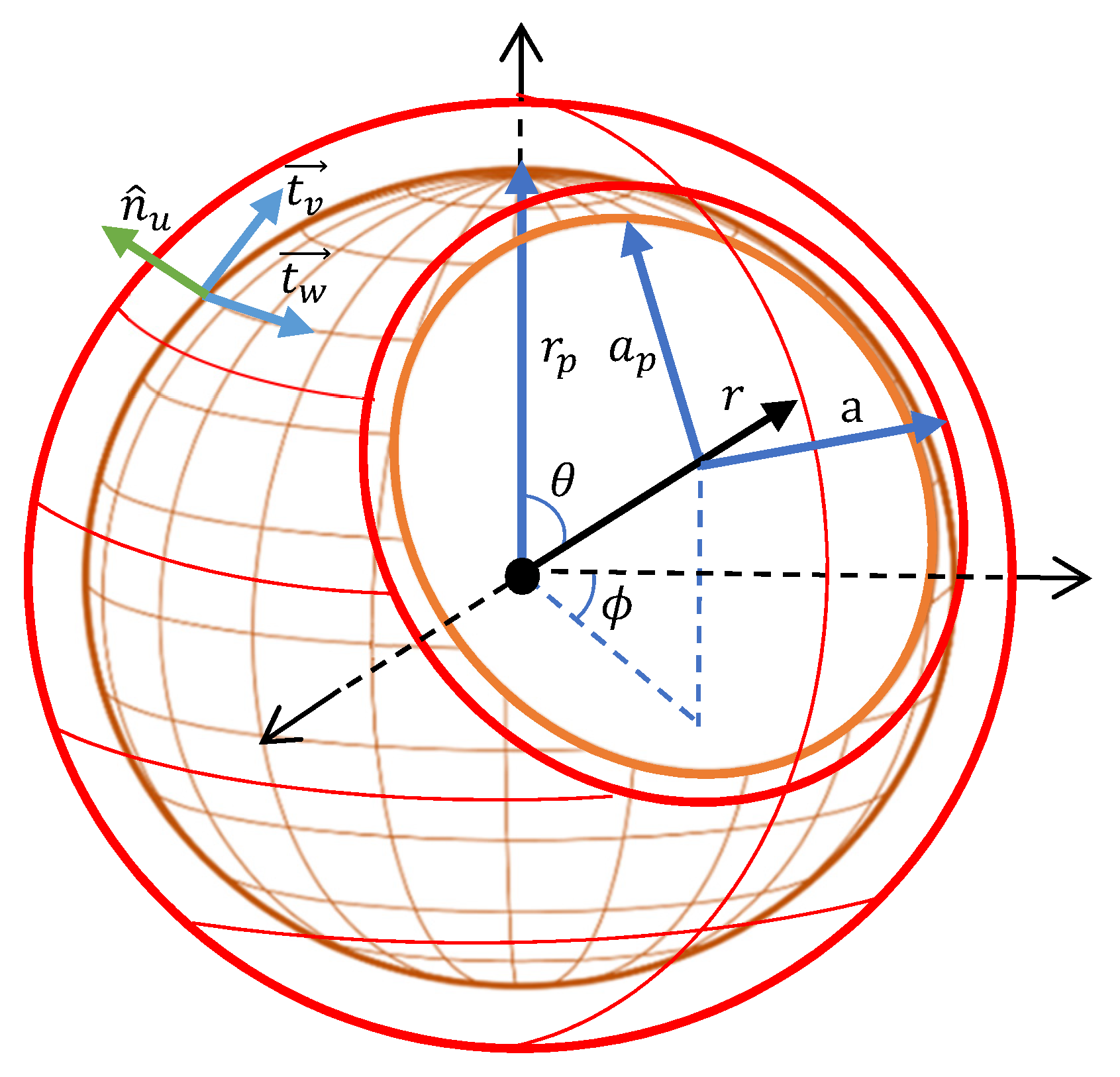
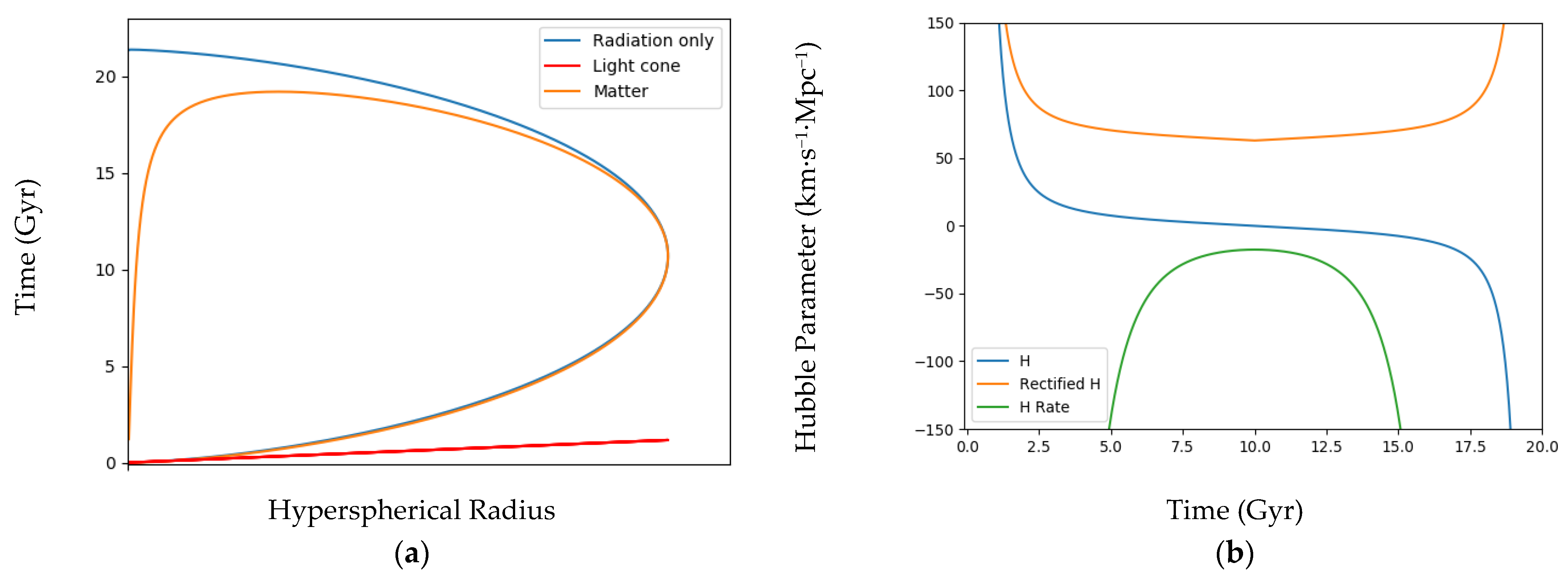
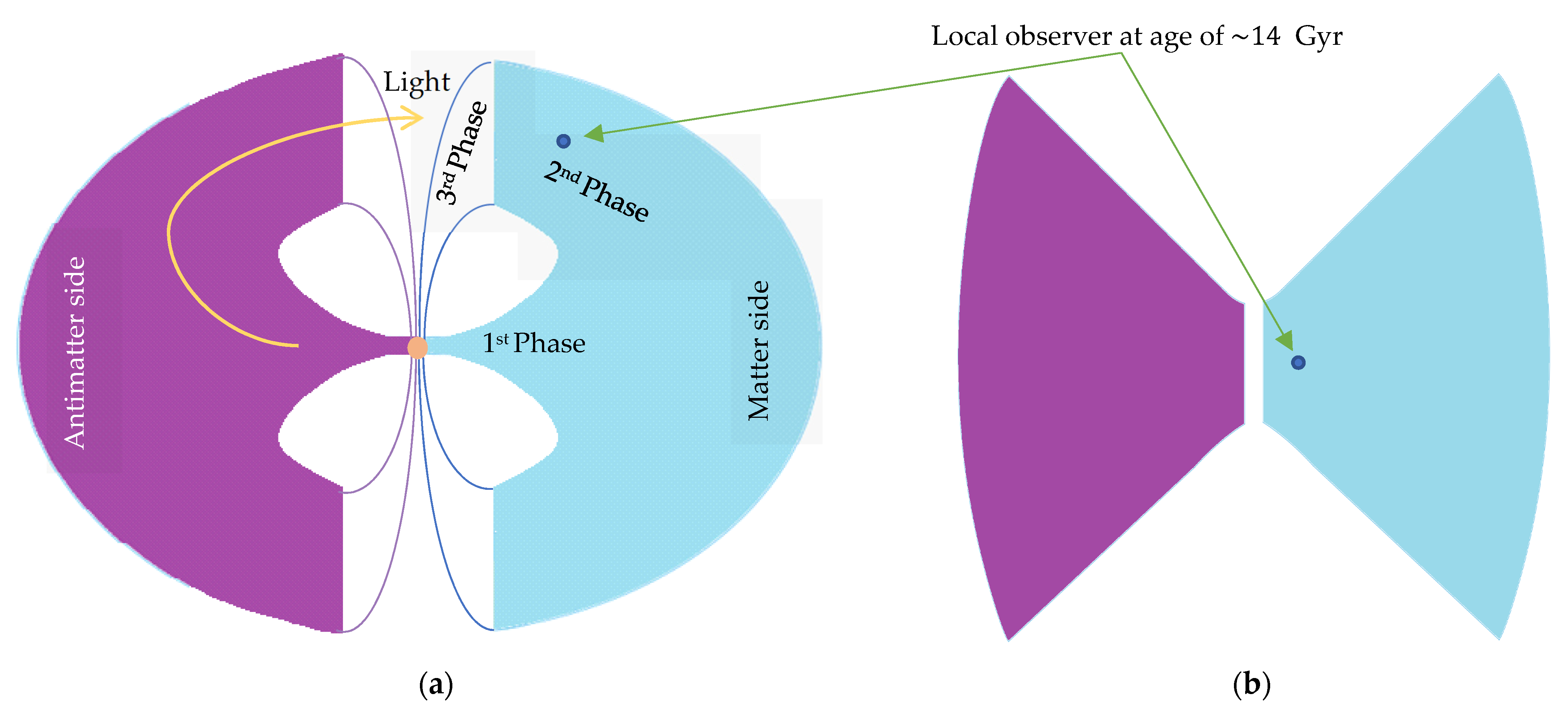
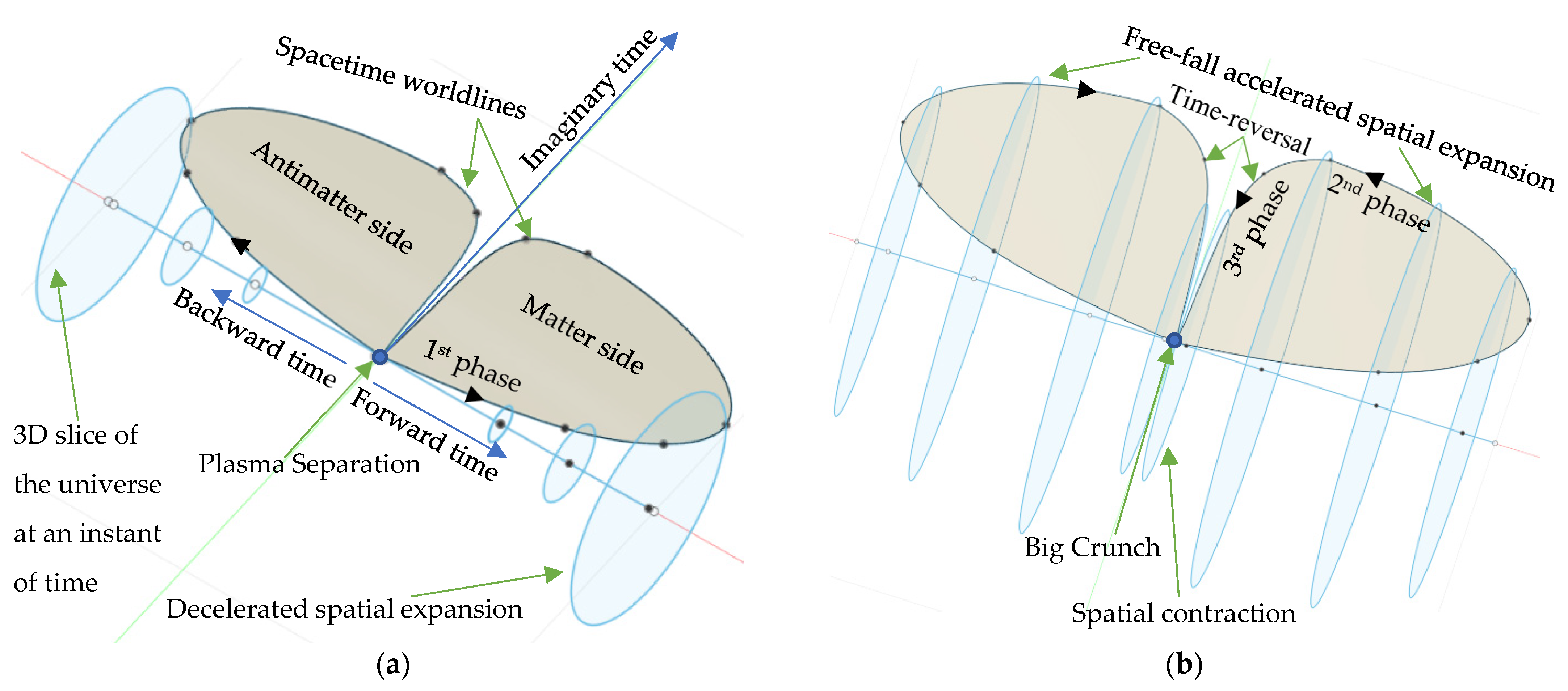
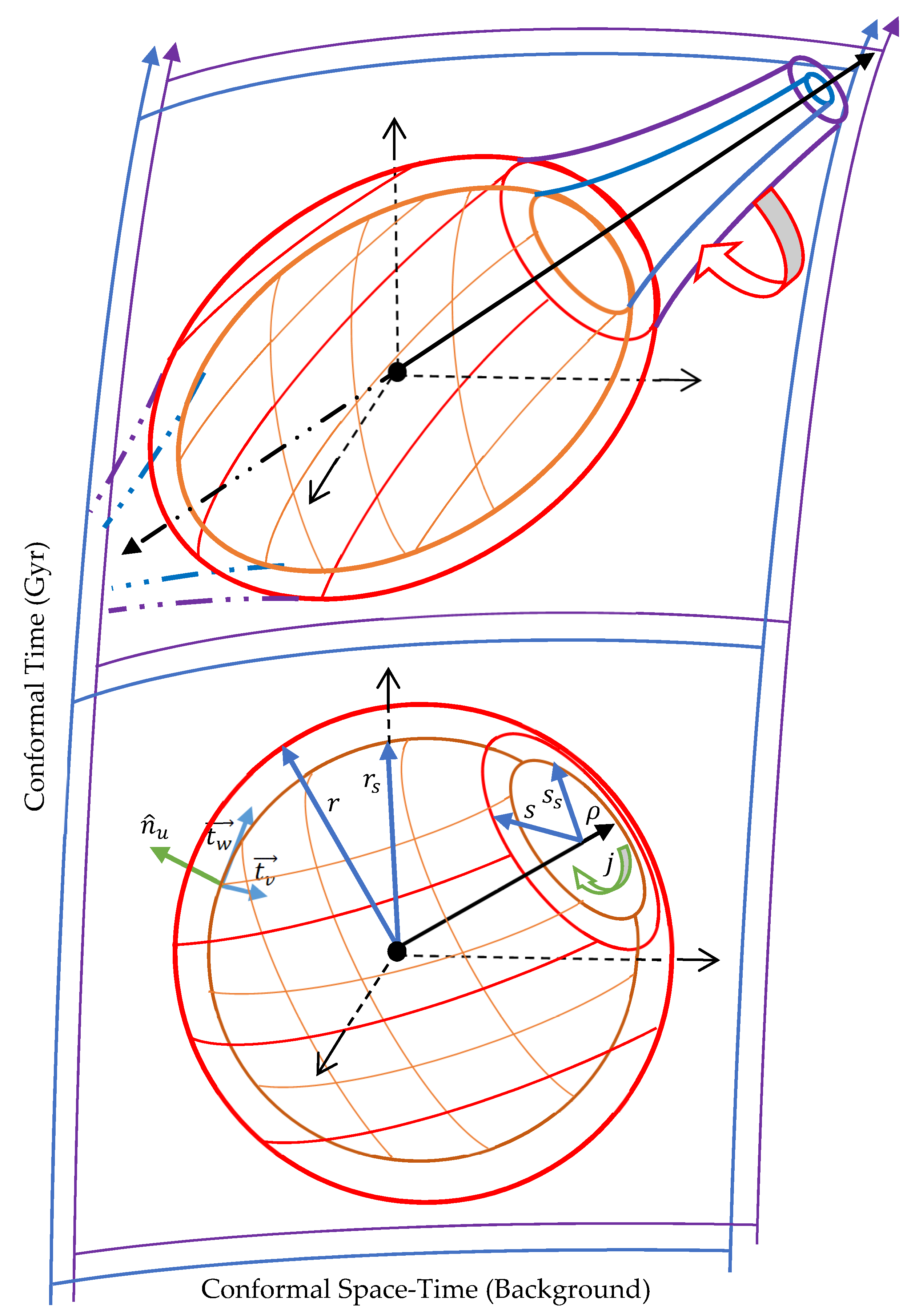

Publisher’s Note: MDPI stays neutral with regard to jurisdictional claims in published maps and institutional affiliations. |
© 2021 by the author. Licensee MDPI, Basel, Switzerland. This article is an open access article distributed under the terms and conditions of the Creative Commons Attribution (CC BY) license (https://creativecommons.org/licenses/by/4.0/).
Share and Cite
Al-Fadhli, M.B. On Spacetime Duality and Bounce Cosmology of a Dual Universe. Phys. Sci. Forum 2021, 2, 61. https://doi.org/10.3390/ECU2021-09291
Al-Fadhli MB. On Spacetime Duality and Bounce Cosmology of a Dual Universe. Physical Sciences Forum. 2021; 2(1):61. https://doi.org/10.3390/ECU2021-09291
Chicago/Turabian StyleAl-Fadhli, Mohammed B. 2021. "On Spacetime Duality and Bounce Cosmology of a Dual Universe" Physical Sciences Forum 2, no. 1: 61. https://doi.org/10.3390/ECU2021-09291
APA StyleAl-Fadhli, M. B. (2021). On Spacetime Duality and Bounce Cosmology of a Dual Universe. Physical Sciences Forum, 2(1), 61. https://doi.org/10.3390/ECU2021-09291





